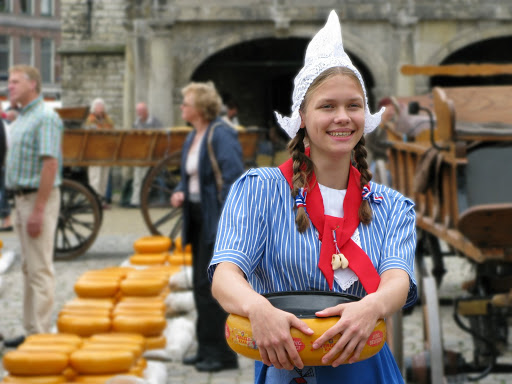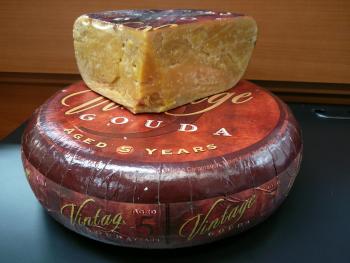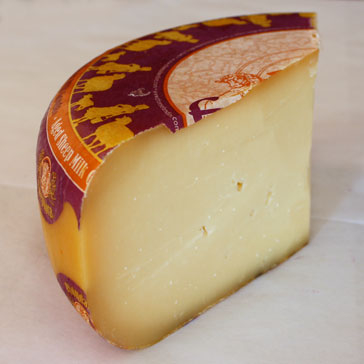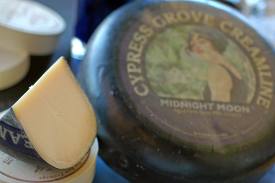Gouda is one of my favorite and most beloved cheeses. I find that most people think Gouda is a rubbery, squishy and flavorless cheese found in the grocery aisle, but Gouda is so much more diverse.
Aged Gouda is one of those cheeses, like an excellent Camembert, that opens your eyes to the world of artisan cheese. Gouda is typically a cow’s milk cheese, though that has been played around with a lot within recent years. Gouda hails from the Netherlands in South Holland and dates back to around 1184. What sets Gouda apart from other cheeses is the 'delactosting' or washing of the curd in the cheese making process. Hot water is added to the curds, which washes them of their lactic acid resulting in a sweeter cheese. The curd is then pressed under the warm whey into wheels allowing the sweetness and crunchies to develop with age.
The Dutch take their Gouda very seriously and have names for all the different stages of Gouda from 'Extra Belegen' aged around 7-8 months, 'Oude Kaas' aged between 10-12 months, and the elderly 'Overjarige Kaas' which is aged over 18 months. One of my favorite Overjarige Kaas is Vintage Gouda, a 5-year aged cow's milk Gouda from the motherland with tyrosine (amino acids of casein) sugar crystals (think parmesan's crunchy bits). The butterscotch and caramel flavors of the deep golden orange color Gouda are serious showstoppers.
When buying Gouda you want to keep an eye out for certain characteristics. You can tell a lot about the cheese just from its color and density. Most aged cow's milk Goudas are that dreamy golden color. This tells you that the Gouda has been aged and depending on the richness of the color, the level of sweetness. Most cow’s milk cheeses do not appear this shade unless they've spent at least a month maturing and developing those wonderful sugar crystals I'm so taken with.
This deep color is also a good indicator that the Gouda is firm cheese. Fresher Goudas tend to be pale in color which can mean the cheese is more spongy or squishy to the touch; however this is not the case with Goudas made with goat or sheep's milk. Go ahead and give your cheese a good inspection and squeeze if you aren't able to taste before you buy.
Since aged Gouda offers up butterscotch flavors and even a dark rum or fresh fruit on the nose, they lend themselves to a wealth of wonderful pairings. Nuts, fruit spreads and honey are all excellent choices. Savory pairings, like caramelized onions are also fantastic. Here are a few to get you started on your love affair with Gouda:
Ewephoria is as dreamy as it sounds. This unusual Gouda is a sheep's milk cheese and is a play on the word ewe, meaning sheep. This Gouda is perfect for satisfying your sweet tooth with its deep brown sugar and nutty flavors. Though this cheese is delightful on its own, try it with Di Bruno's Tres Toffee Cashews and wash it down with Troegs Java Head Stout or your favorite bourdon.
Midnight Moon hails from Holland but with the guidance of the renounced goat whisper Mary Keehn of Cyrpress Grove Creamy. The pale ivory color of this Gouda is indeed aged but gets its color from its bright goat's milk. Midnight Moon offers the typical sweetness of Gouda but with the bit of goat’s milk on the finish.
This Gouda matches well with a scrumptious fig jam and Syrah or Sauvignon Blanc.
Vintage Gouda is mother of all Goudas. If you can resist devouring it all, highlight its crunchy sugars with a silky caramel sauce and a nice wheat beer like Bell's Oarsman Ale.
Originally written for Di Bruno Bros Blog




